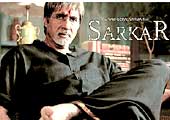|
HEADLINER
B.M. Khaitan
IN A MOVE Aimed
at securing its leadership in the batteries business, Eveready
Industries has acquired a competing business from BPL for Rs 67
crore. The B.M. Khaitan-owned Eveready already has a dominant
46 per cent share of the market, and BPL Soft Energy Systems fetches
another 9 per cent. Says Deepak Khaitan, Vice Chairman and Managing
Director of Eveready, and a scion of the Kolkata-based group:
"The acquisition made a lot of sense for us. It was becoming
increasingly difficult to gain market share, which this acquisition
affords. Besides, it would give the Eveready brand the much-needed
shelter. After all, you need to protect your 46 per cent market
share also."
Following the acquisition, where rights to the
BPL brand name expire after 30 days, Eveready will have only one
competing group, Panasonic, and two competing brands, Novino and
Nippo. Khaitan's next move may well be global. "You need
to have a global brand if you want to have a respectable slice
of the export pie," he says. Clearly, the Khaitans are far
from done.
-Ritwik Mukherjee
Logging Out Of GSM?
 |
| ADAE's Ambani: CDMA all the way |
ADAE group's Anil Ambani seems to be putting
all his telecom eggs in the CDMA basket. If industry sources are
to be believed, Ambani's Reliance Telecom, which offers GSM-based
cellular services in about half-a-dozen circles in the North-East
and the North, including West Bengal and Himachal Pradesh, is
said to be considering a purchase offer from China Mobile (Hong
Kong). Earlier, AFK Sistema of Russia, which has been scouting
India for deals for sometime now, was said to be in talks with
Reliance Telecom.
Flying Against The Wind
Indian aviation may be flying low-cost, but
Coimbatore-based Paramount Airways has decided to go business
class. Promoted by the Thiagarajans, Madurai-based textile magnets,
Paramount is the first carrier to fly Brazilian Embraer E-Jet
in India. It has signed up for two Embraer 170s and three 175s
for its operations connecting not just small towns such as Madurai
and Coimbatore, but tier-II towns directly to major metros (say,
Coimbatore-Delhi). But it remains to be seen if Paramount's low-cost
full-service model proves viable.
 |
| Tata Steel's Muthuraman: Insatiable |
Tata Steel On The Prowl Again
Tata Steel's B. Muthuraman is in a tearing
hurry to meet his 15-million-tonne deadline of 2010. A year after
he acquired Singapore-based NatSteel's steel business, he's said
to be on the prowl for another acquisition or greenfield investment
in Vietnam. It's globalisation, the Tata Steel way.
NEWSMAKERS
RANBAXY'S HUNTERS
 |
| This fortnight's heroes: Ranbaxy's
Singh and CEO BrianTempest |
What
do you do if you are the head of a company whose prospects in
the long term are great, but has hit a temporary trough, including
all the accompanying ills, a decline in revenues, operating margins,
even profits? Well, if you are Malvinder Mohan Singh, President,
and Brian Tempest, CEO, Ranbaxy Laboratories, you go out and raise
$1.5 billion (Rs 6,600 crore) through a mix of ADRs, GDRs and
FCCBs, and announce that this money will be used to acquire a
pharma firm, either in the US or Europe. "We are witnessing
interesting times in the global pharmaceuticals arena, which is
poised for consolidation," says Singh. "This is the
big opportunity that could well change the pecking order and determine
who will dominate the generics (read: drugs that go off patent)
business in the next decade."
Today, Ranbaxy is the world's eighth-largest
generics firm. Going by the price Teva, the world's largest generics
firm (revenues of $4.8 billion or Rs 21,120 crore), paid for US
generics major Ivax ($7.4 billion or Rs 32,560 crore for a company
with sales of $1.8 billion or Rs 7,920 crore), Ranbaxy's acquisition,
if it spends all of the $1.5 billion, should fetch it a company
with sales of $400-450 million (Rs 1,760-1,980 crore). In turn,
that would make it (2004-05 revenues: Rs 5,245 crore or $1.2 billion)
a $1.6-billion or Rs 7,040-crore firm, and the world's fifth-largest
generics one. Size definitely matters in the highly commoditised
global generics business. It'll be purely incidental that any
acquisition of this magnitude will be India Inc.'s largest ever.
- -Sahad P.V.
NUMBERS
OF NOTE
$300
billion (Rs 13,20,000 crore): Estimate of hurricane Katrina's
toll on the treasury, equal to what it cost the US to fight the
wars in Afghanistan and Iraq
23 million sq.ft:
New commercial space being developed in India this year. By 2009,
the number will rise to 50 million sq. ft, says Global real estate
services provider Cushman & Wakefield
Rs 13 lakh: Cost
of a 2-Mbps (internet-access) line in India. A 45-Mbps line costs
over a crore; it does Rs 44 lakh in South Korea
30 kg: Per capita
steel consumption in India. This compares with an average of 200
kg in China and 900 kg in Korea
20 million barrels
a day: us consumption of oil. If lined up in 1-gallon cans, this
volume would encircle the earth at the equator almost six times
(about 147,000 miles of cans)
90%: Proportion
of children between 6 and 14 who enrol in schools in India. 75
per cent of those enrolled drop out by eighth grade, and 85 per
cent quit by 12th grade
58%: Proportion
of subsidised foodgrain issued from the central pool that does
not reach poor families because of identification errors and unethical
practices
100: Number of
commands in the first version of MS Word. The 2003 version has
more than 1,500 commands and 35 tool bars
27: The number
of signatures needed by Indian companies seeking to export. It
requires just five signatures in the US and three in Japan
3: The number
of shopping malls in India three years ago. If that's low, some
250 are in the works and will be up by 2008
750 million:
Number of cellphones expected to be sold worldwide this year;
IDC says some 57 million digital music players will be sold too
NOTED
 Decided:
By the Wadia Group, the date
of launch of Go Air, its low-cost airline. Go Air Managing Director
Jeh Wadia (shown here) tells BT that the airline will, er, go
on air on October 30. The domestic aviation market in India has
exploded over the past year and Go's entry should intensify competition.
"Our target will be those who travel by the AC compartments
of trains, apart from those who travel by Volvo buses," says
Wadia. Decided:
By the Wadia Group, the date
of launch of Go Air, its low-cost airline. Go Air Managing Director
Jeh Wadia (shown here) tells BT that the airline will, er, go
on air on October 30. The domestic aviation market in India has
exploded over the past year and Go's entry should intensify competition.
"Our target will be those who travel by the AC compartments
of trains, apart from those who travel by Volvo buses," says
Wadia.
Planned: By Abdul
Kalam, India's President, an 8-MW photovoltaic plant (read: solar
energy plant) that will power his official residence, Rashtrapati
Bhawan. The plant is expected to pay for itself in 20 years.
Acquired: By
the Indian Farmers' Fertiliser Co-operative (IFFCO), the fertiliser
unit of the Abhay Oswal-promoted Oswal Chemicals and Fertilisers.
The co-operative recently announced that it would invest up to
$1 billion (Rs 4,400 crore) in greenfield facilities in India
and elsewhere.
Cleared: By the
Tamil Nadu government, a proposal by the world's largest electronics
manufacturing services firm Flextronics to invest Rs 450 crore
in a manufacturing facility in the state. The company will start
off by manufacturing cellular phones and set-top boxes. Flextronics
already has a significant presence in India after its 2004 acquisition
of Hughes Software Systems (since renamed Flextronics Software
Systems).
 Lost:
By Indian Oil Corporation (CEO S. Behuria is shown here),
a bid to acquire a 51 per cent stake in Turkey's Tupras to a consortium,
Shell-Koch. The ONGC-(Lakshmi) Mittal combine recently lost a
bid to acquire PetroKazakhstan to China's CNPC. IOC bid up to
$4.12 billion (Rs 18,128 crore); the winning bid was $4.14 billion
(Rs 18,216 crore). Lost:
By Indian Oil Corporation (CEO S. Behuria is shown here),
a bid to acquire a 51 per cent stake in Turkey's Tupras to a consortium,
Shell-Koch. The ONGC-(Lakshmi) Mittal combine recently lost a
bid to acquire PetroKazakhstan to China's CNPC. IOC bid up to
$4.12 billion (Rs 18,128 crore); the winning bid was $4.14 billion
(Rs 18,216 crore).
Launched: By
Bharti Tele-Ventures, VISA and ICICI Bank, a credit-card-on-SIM,
mChq.
HBlockbuster
Year
September, and already B'wood's best year.
Bollywood
had only 10 hits of 177 releases to show for its performance in
2004. This year, it already has 15 of 87 (in the first eight months).
With the festival season yet to come, and big releases such as
Dil Jo Bhi Kahey and Mumbai Godfather lined up, 2005 could well
end up being Bollywood's best showing in a long long time. "Business
is very good this year and some good films have been made,"
says Yash Chopra, Chairman, Yash Raj Films, the company behind
monster-hit-of-the-year Bunty Aur Babli (it made Rs 41.8 crore)
and the just-released Salaam Namaste (in its first five days,
it returned Rs 9.5 crore on a budget of Rs 12 crore and is well
on its way to being a hit).
One reason for the improved performance of
Bollywood is that producers have planned their releases. That
may sound simple but it involves everything from marketing to
promotional tie-ins to increasing the number of prints of a movie,
thereby, making a killing in the first few weeks before piracy
takes its toll. Apart from investing more in advertising, production
houses also appear to be thinking in terms of target audiences
and segmentation, even at the script-stage. "Movies are being
aggressively (and differently) marketed," says Tushar Dhingra,
Vice President, Sales & Marketing, PVR Cinemas. In this, Bollywood
has been helped by the growth in the number of multiplexes in
the country, some 73, with 276 screens across the country in March
2005, between 15 per cent and 20 per cent more than the corresponding
numbers in 2004. Apart from drawing people back to cinemas, multiplexes
(some of their halls are small) provide an ideal platform for
indie films and the like. One of this year's blockbusters is one
such, Page 3. With revenues of Rs 11 crore, no one dare call it
a multiplex movie, though.
-Ahona Ghosh
Realty
Bites
Urban land reforms are a must to attract FDI.
 |
| Stumbling blocks: Real estate laws
need to be revamped |
At
last count, there were about a dozen foreign real estate developers
and seven private equity investors waiting to sink their teeth
into India's realty pie. They had better watch out, though. The
real estate business is littered with legislative landmines, which
not all of the foreign investors may know how to sidestep. Take
the case of a mammoth us-based apartment management company that
acquires, develops and manages rental properties internationally.
While this company is understood to be surveying the Indian market
closely, it is at a loss when it comes to doing business in a
market like Mumbai, where rentals are frozen at 1940s levels,
courtesy the Rent Control Act-a legislation introduced during
World World II to protect citizens from soaring inflation. Says
Pranay Vakil, Chairman, Knight Frank India: "At least two
foreign firms meet us each week, but we recommend they tie up
with a local partner since the legislations are too complex."
In fact, there isn't even a law that reconciles the built-up area
with the carpet area, i.e., what you build and what you sell,
he says.
That's just one example. Did you know, for
instance, that land titles are merely presumptive and not conclusive
across the country? Says Swati Ramanathan, co-founder of Janaagraha,
a Bangalore-based NGO that has studied the issue of land titling
in-depth: "If you have registered a sale deed, that registration
is merely fiscal in nature; it does not mean you own the land.
By contrast, you have the Torrens system of real estate ownership
followed in several countries, where the state guarantees ownership."
No wonder, eight out of 10 cases at Indian courts pertain to land
disputes.
-Priya Srinivasan
THE
CHINA-EU SPAT IS OVER. SO, WHY ARE WE SMILING?
 Because
"large departmental stores in Europe are switching to Indian
apparel exporters due to uncertainties of doing business with
China", says Ajay Sahai, acting Director General of FIEO,
an exporters' association. According to him, European departmental
stores also expect the cost of procurement from China to increase
by at least 10 per cent following the upward revaluation of the
yuan. Result: "We are already witnessing a spurt in textile
exports to Europe," says Rakesh Vaid, Chairman, Export Promotion
Council. However, Indian and Chinese textiles are not substitutes,
cautions Stefano Gatto, trade counsellor at European Commission.
"Much depends on how the Indian textile industry positions
itself," he says. Let's not forget that compared to China's,
exporters in India are minnows. Because
"large departmental stores in Europe are switching to Indian
apparel exporters due to uncertainties of doing business with
China", says Ajay Sahai, acting Director General of FIEO,
an exporters' association. According to him, European departmental
stores also expect the cost of procurement from China to increase
by at least 10 per cent following the upward revaluation of the
yuan. Result: "We are already witnessing a spurt in textile
exports to Europe," says Rakesh Vaid, Chairman, Export Promotion
Council. However, Indian and Chinese textiles are not substitutes,
cautions Stefano Gatto, trade counsellor at European Commission.
"Much depends on how the Indian textile industry positions
itself," he says. Let's not forget that compared to China's,
exporters in India are minnows.
-Swati Prasad
THE
ADVENTURES OF MANI: BLACK (SEA) GOLD
 By
the end of this month, the first consignment of crude from Black
Sea will hit the Indian shores. The modest shipment of 6 lakh
barrels will be more expensive than the crude India buys from
West Asia. So why is Petroleum Minister Mani Shankar Aiyar, and
everybody else, cheering? For one, "it signifies the diversification
of crude oil sources," says Deepak Mahurkar, Senior Consultant,
PricewaterhouseCoopers. Today, India sources around 60-70 per
cent of crude from West Asia. By adding another source, India's
bargaining power with Middle East suppliers improves. Besides,
crude from the Black Sea will come to India via the recently-inaugurated
Baku-Tbilisi-Ceyhan (BKC) pipeline, which carries oil from the
Caspian Sea to the Mediterranean, instead of using tanker transport
along the Black Sea and the highly congested Bosporus. "Getting
crude from the Black Sea is the beginning of an important phase,"
says Ajay Arora, Associate Director, Ernst & Young. By
the end of this month, the first consignment of crude from Black
Sea will hit the Indian shores. The modest shipment of 6 lakh
barrels will be more expensive than the crude India buys from
West Asia. So why is Petroleum Minister Mani Shankar Aiyar, and
everybody else, cheering? For one, "it signifies the diversification
of crude oil sources," says Deepak Mahurkar, Senior Consultant,
PricewaterhouseCoopers. Today, India sources around 60-70 per
cent of crude from West Asia. By adding another source, India's
bargaining power with Middle East suppliers improves. Besides,
crude from the Black Sea will come to India via the recently-inaugurated
Baku-Tbilisi-Ceyhan (BKC) pipeline, which carries oil from the
Caspian Sea to the Mediterranean, instead of using tanker transport
along the Black Sea and the highly congested Bosporus. "Getting
crude from the Black Sea is the beginning of an important phase,"
says Ajay Arora, Associate Director, Ernst & Young.
-Swati Prasad
THE
NEW RED FM
 Red
FM 93.5, the country's fastest growing FM radio station (part
of the India Today Group that publishes Business Today) according
to the National Readership Survey, has gone in for a complete
overhaul: a new look and feel, perky logo, new tag line (Bajate
Raho), sharp content and an aggressive marketing campaign. "The
idea is to differentiate ourselves from the competition," explains
Abraham Thomas, Chief Operating Officer, Red FM. With similar
music being the mainstay of most stations, "it's mainly through
a different positioning, a change in tone and tenor of the RJs
and new promos that we can stand above the crowd", he adds. Red
FM 93.5, the country's fastest growing FM radio station (part
of the India Today Group that publishes Business Today) according
to the National Readership Survey, has gone in for a complete
overhaul: a new look and feel, perky logo, new tag line (Bajate
Raho), sharp content and an aggressive marketing campaign. "The
idea is to differentiate ourselves from the competition," explains
Abraham Thomas, Chief Operating Officer, Red FM. With similar
music being the mainstay of most stations, "it's mainly through
a different positioning, a change in tone and tenor of the RJs
and new promos that we can stand above the crowd", he adds.
COSTA'S
HERE, STARBUCK'S NEXT
Sytarbucks
is still scouting for a partner in India-the buzz is that it is
talking to the K. Raheja Group that owns Shoppers' Stop and is
one of India's biggest real estate developers- but it has been
pipped to the post by UK's Costa Coffee, which recently opened
its first outlet outside West Asia and Europe in Delhi's Connaught
Place. While the firm's 550 outlets worldwide and revenues of
$270.4 million (Rs 1,189.76 crore) do not exactly compare favourably
with Starbucks' 9,671 and $5.3 billion (Rs 23,320 crore), Costa
is here, while Starbuck's isn't. "No company with a long term
perspective can ignore the Indian market," says Nick Williams,
Commercial & Franchise Director, Costa Coffee. "It is after all
one of the top four growing economies in the world." In the next
six months, Costa, in India, through a franchise arrangement with
the Jaipuria Group that runs a large bottling operation for Pepsi,
hopes to open 20 outlets in and around Delhi; by 2008, the group
will invest Rs 150 crore in 300 stores across the country. Will
being an early mover give Costa an edge? As R.K. Jaipuria will
tell you, it gave Pepsi one.
-Supriya Shrinate
|








 Decided:
Decided: Lost:
Lost:







